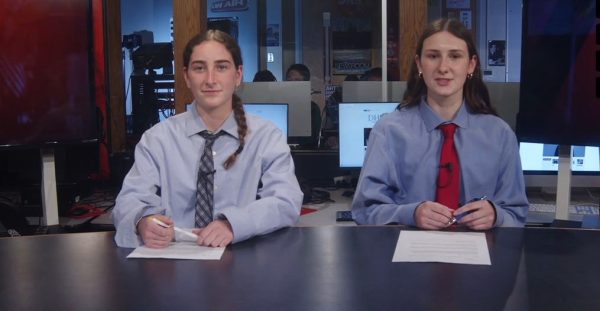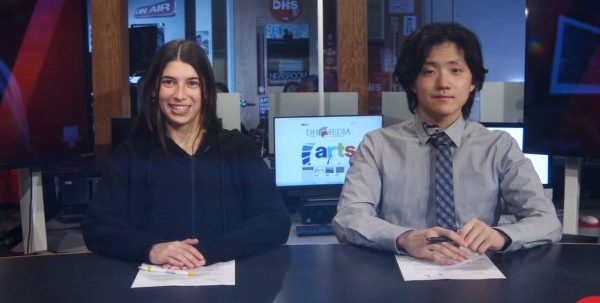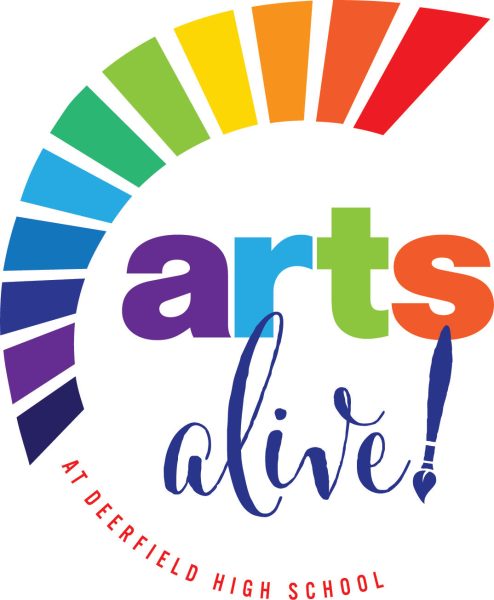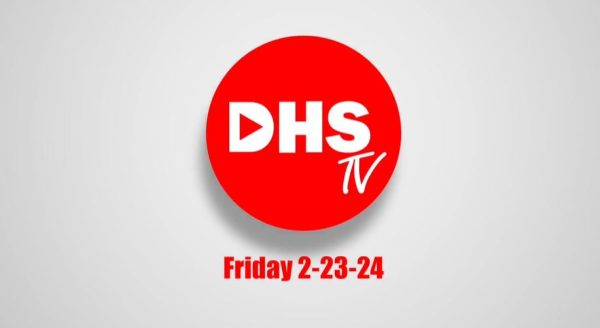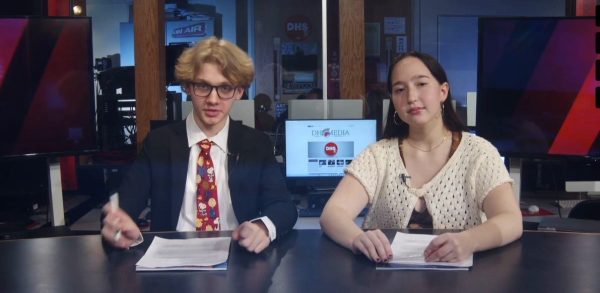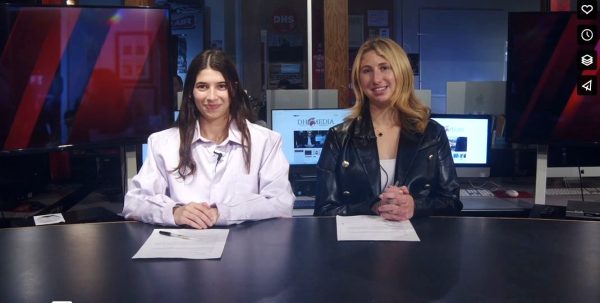The Two Year Time Out: DHS’s New Scoreboard Approval Process
October 31, 2019
Every high school student across the country knows the Friday night scene in October as they walk onto campus: a dark sky illuminated by fluorescent light, noise from all directions as announcers report plays and crowds cheer for their home team, coupled by a contagious atmosphere of school spirit. No other sport seems to be able to produce quite the same sense of community that is brought on by football, which is caused by, among other things, a bond between students, staff, and athletes that forms once 7 p.m. hits and the clock starts ticking. Because the school community highly values this experience, it has long been a goal of the District 113 Board of Education to replace the outdated scoreboard that records these games, but the process has turned out to be a complicated one.
The idea of receiving a new scoreboard was originally brought to the Board of Education in December of 2018 as a topic of discussion during that night’s meeting. The DHS Booster Club was offering the scoreboard as a donation to the athletics program, so the Board was just beginning to review the pros and cons of the project, ranging from construction plans to how the scoreboard would affect the North Trail communities. Sometime after this initial meeting, the project
was brought to the Village of Deerfield, and then eventually it reached Deerfield residents.
One of the unusual things about this particular project is that it did not follow the typical approval process that the Board follows for projects of this nature. District 113’s Superintendent Dr. Bruce Law explained that this order is actually backwards, because it shouldn’t have been brought to the Village until it was approved by the Board of Education. The standard procedure would have been an initial presentation from the Booster Club to the superintendent about the scoreboard, and, if approved by the superintendent, the Board of Education would vote on it. If it passed, the official proposal would then be brought to the Village. In this case, the Booster Club hasn’t actually made a formal proposal yet for Dr. Law to approve, resulting in an unfinished proposal to the Village.
Dr. Law and the Board of Education are now waiting for the Booster Club to make an official proposal for the scoreboard. When Deerprints reached out to the Booster Club during early October for an interview through their website’s contact page, the president explained that they wouldn’t be able to make a statement for at least a month because they are still working with the school to get some clarity on the entire situation. Because of the complications that have occurred in this process, there is a lot of feedback from the community that hasn’t been addressed, so it’s no surprise that the Boosters will need some time to revise their plan.
Many of the responses from community members reflect concerns about the impact that the scoreboard will have on neighbors who live in the North Trail area. Richard Furst is a member of the North Trail Homeowners Association, and is on the board for his first year as a high school liasion. He has been involved in the discussions about the scoreboard, which have been taking place at board meetings, since its initial proposal in 2018. He explained that, “North Trail residents are looking at three main criteria: sight, safety, and sound. We’re in support of a new scoreboard, but we have to be sure to take into consideration these factors.”
In terms of sight, Furst explained that some of the proposed sizes for the scoreboard would make it visible for a few neighbors who live very close to the high school. The salesperson who brought the plans to the Boosters Club had several sizing options, but as Furst explained, the recommended size was upwards of 600 x 700 square feet. If it were that big, it would definitely be visible from the houses of surrounding neighbors, so the suggestion from the Homeowners Association is a size adequate for viewing from the the neighborhood. The size also relates to the next issue, which is safety. The proposed location for the scoreboard is at the northern end of the football field, opposite of where it is now. This would mean that anyone driving north on Waukegan Rd would have a direct view of the scoreboard, and at such a big size there is a concern that it would be distracting, and therefore a safety hazard. The final issue is sound, which came about from talk of the Village using the scoreboard for community purposes, like a movie night, for example. The sound would cause a disturbance for any houses in range of the scoreboard’s audio.
“We have to remember that it’s not just Deerfield residents who are affected by this decision. District 113 has 50,000 stakeholders, and we have to consider everyone who will be affected by this scoreboard,” said Garlovsky.
Furst explained that as a parent of DHS students, as many members of the NTHOA are, the sides of the issue are more complicated than just for or against the scoreboard. Many members would love to see a new scoreboard for DHS as it would enhance the experience for students, but they hope it will be implemented in a way that doesn’t harm the surrounding community.
Another aspect of the project that is still being discussed is the funding. The Booster Club proposed that it would receive funding for the project from two main sources: a loan and a reduction of spending in the athletics program for the duration of the loan. This strategy is still being discussed because the second source of money isn’t totally confirmed; the Booster Club had also suggested running ads on the scoreboard and getting revenue that way.
There are always considerations of maintenance costs and future repairs that aren’t included in the donation. Dr. Law explained that there were still a lot of questions about how much it would cost to maintain–like whether or not there would be an increase to the electric bill in comparison to what was paid for the old scoreboard, which uses considerably less power, for example.
With conversations like this going on, plus the initial setback of an unfinished proposal, the process to implement a new scoreboard has slowed down quite a bit. District 113 Board of Education President Lizzy Garlovsky touched on many of these issues when she explained how the Board was addressing community feedback, and even mentioned more considerations that have to be made, which extend beyond the NTHOA’s comments. She said, ”We have to remember that it’s not just Deerfield residents who are affected by this decision. District 113 has 50,000 stakeholders, and we have to consider everyone who will be affected by this scoreboard.” Knowing that all this feedback is going to make the decision-making process difficult, she added that, “the Board is taking the time to be careful and be sure that this is done right.”
Garlovsky added that, “the Board is taking the time to be careful and be sure that this is done right.”
As this process continues, the scoreboard is becoming more and more of a community-wide project, or at least one that will affect the entire Deerfield community. With such a large impact, its supporters continue to work towards a solution that will enrich the community both for the sake of football and beyond.


